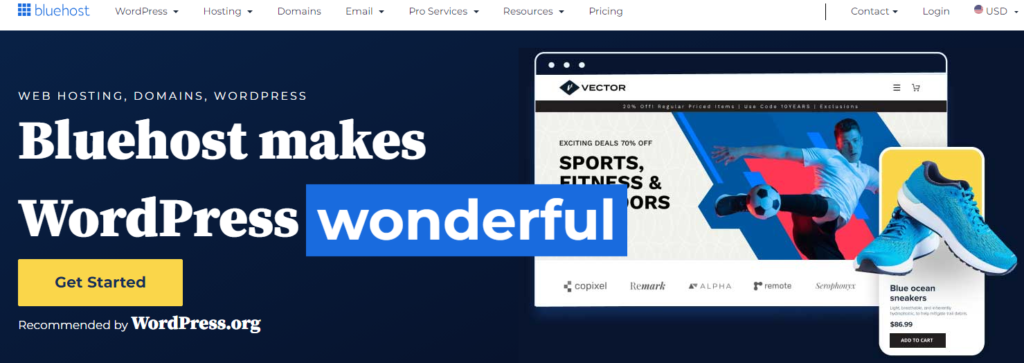The digital age has made it easy, relatively inexpensive, and very rewarding to start a blog. It does not matter because you’re interested in a particular field, have a desire to share your experiences of knowledge, or search for an audience on the Internet. The most creative way to do this is to create your own blog. Using this complete handbook, you will go through all the phases of your business establishment, from selecting a niche to developing an audience. Now, let us plunge into the blogging world and investigate how to launch a well-functioning blog.
What is a Blog?
A blog is an online platform where individuals or organizations share their thoughts, expertise, and experiences. These topics range from personal diaries and hobbies to professional advice and industry insights.
The motivations behind starting a blog are as diverse as the blogs themselves. Some people blog for personal fulfilment, while others use it as a powerful business or personal branding tool. Blogging allows you to express your creativity, connect with like-minded individuals, and potentially earn money.

Blogging offers numerous benefits, including:
- Self-expression: Share your thoughts and ideas with the world.
- Networking: Meet others with common interests.
- Learning: Researching and writing about your niche expands your knowledge.
- Income: There are numerous ways to earn money from blogging.
The beauty of blogging is that anyone can start one. Whether you’re a student, stay-at-home parent, professional, or retiree, blogging is a flexible platform that adapts to your schedule and interests.
How to Start a Successful Blog?
If you have decided to start a successful blog – then don’t worry, follow the below steps with proper attention and research.
Choosing the Niche
The first stage in your blogging career is identifying your niche. What drives your life and what are you really passionate about? What do your skills impact on? Finding a niche does not only create the atmosphere for your blog but also reaches out to readers of similar interest. Firstly, take into account the market demand and competition to make sure that the chosen niche is providing suitable opportunities for growth and engagement.

Choosing a Blogging Platform
With such a weighty decision ahead, choosing a suitable blogging platform can have long-term implications on your road to blogging success. With a wide range of possibilities that focus on all sorts of needs. One must decide which fits well with the purpose and technical ability.

You can say that selecting a blogging platform is analogous to picking the basic structures of the virtual home. It is not a detail about the features only but about the compatibility with your objectives and user softness. While choosing a platform that suits your needs, take some time to discover, beginning at the spot, empowering your innovative side and advisable you with your blogging goals.
Choosing a Domain Name and Web Hosting
On the internet, the address of your blog is its domain name. Choose a name that reflects your niche and is easy to remember. Pair it with reliable web hosting for a seamless online experience. Multiple online hosting platforms may assist you in choosing a customized plan. Out of these, I recommend you choose Bluehost as it is most reliable from all perspectives.

Once you’ve chosen a platform and domain name, follow the setup instructions to create your blog. Customize the appearance and settings to suit your style and preferences.
Choosing a Theme and Customizing Your Blog
Starting a blog is not just words; it is about designing an attractive, easy-to-use web space. The theme of your blog is the ‘look and feel’ of your brand, depicting the mood and subject of the content that is shared through the blog. Choose a blog theme that improves the user interface, provides a neat and easily navigable layout and is compatible with your blogging platform.

- Customization is of utmost importance because it enables you to teach brand-identifying factors, experience with styles of font, and present visual material well.
- Plugins perform an important function—install SEO plugins for improved visibility and social media plugins for increased interactivity.
- You have to consider that changing the blog theme is feasible but you can have some things to think about as the layout could be affected, and also some customizations may not turn out as expected.
If you choose free themes or those not so expensive, the importance of choosing the best one and the successful customization accentuates your blog and makes it an original and attractive online presentation.
Creating Content for Your Blog
The success of a blog entirely depends on the ability to create captivating content that touches your audience. First, identify the requirement gap of your target audience and their key problems, and make your content relevant to them. Writing high-quality content requires writing headlines that are quite captivating, remarkable introductions, and value from the content itself.

- Aesthetics is important; therefore, it provides such elements as images, infographics and videos to the readers so that the content of a given article will feel more enjoyable.
- Search engine optimization is about optimizing the content to get a higher ranking; for this purpose, keyword research should be done and necessary keywords should be incorporated into the article. Prompting responses should be using clear calls to action and active engagement to comments.
Make postings consistent and postings regularly and not in bulk, rather quality of posts should be maintained to avoid losing readers. Whether it is a women’s fashion blog or teen teenage Tumblr, long-term blogging is not just about being consistent and having the willpower to create valuable and engaging content that touches lives.
Promoting Your Blog
However, writing catchy content is not where blogging ends. Promotional strategies play a key role, in enhancing the scope of your influence.
- Utilize social media tools by using customized content illustrating the target audience and engaging individuals on a continuous basis.
- Optimize the web pages through on-page SEO techniques, backlinking and the acquisition of good-quality backlinks.
- Create email lists to grow your subscriber base and send personalized blog newsletters to your readers.
- Partnerships with other Bloggers through guest posting and co-projects will help increase your audience.

Employing a multiple-promotion strategy that combines different techniques will enable you to achieve the best possible exposure for your blog and, ultimately, make room for continuous growth. If the above happens, then one must track and modify strategies as per data and monitor key metrics to ensure proper optimization of promotional efforts.
How to Start a Successful Blog – Monetizing Your Blog
Monetization strategies become invaluable only after your blog has matured and has achieved a certain number of reads. Which then allows you to turn your passion into a source of income. Making money from your blog entails strategic choices and taking in alternative ventures. Since, monetizing your blog can be done in several ways, outlined are a number of ways which you can monetize your blog:
1. Display Advertising:
The use of blog display ads can probably be considered the basis of monetizing blogging. Make use of ad networks such as Google AdSense to source ads and show site visitors relevant finds. However, the placement of advertising is done strategically to improve visibility without ruining the overall experience of the user in any way. Making money through display advertising is a passive type of income stream for your blog that could boost your income when more and more people go to the site.
2. Affiliate Marketing:
Affiliate marketing entails selling products or services through specific links that are created with unique material identifiers. These programs enable businesses to join, making them able to generate commissions by earning a penny for every sale or action attributable to other individuals. Select relevant products that fall within the entity of your blog niche to improve the chance of the recommendations being authentic. Thus, considering that your audience relies on your insights, affiliate marketing could be a rich source of turnover.
3. Sponsored Content:
Another crucial option that can be utilized is working with brands for sponsored content. Through sponsored content, brands put a price on content that effortlessly weaves into their products or services. This is as it continues to identify which content is sponsored and which isn’t; keeping transparency is the crux of engaging and maintaining your audience. This strategy can work effectively if it is coupled with an influential audience.
4. Sell Digital Products:
Digital products, and actively promoting them for sale, you can turn your areas of knowledge into a source of income. Create ideas, such as ebooks, online courses, or printables, in which your audience finds value. This monetization process does not only display your knowledge but also allows you to share with viewers various resources they are willing to buy; moreover, your affiliation makes sense.
5. Subscription Model
It becomes possible to introduce a membership or subscription method through which premium content or special features are made available to paying subscribers. This model works better if, for example, bloggers are offering lengthy, in-depth analysis, focused on a specific topic area or subject, or unique materials. With recurring revenue coming from the audience targeted and dedicated to the value you’re providing, you can create a steady source of income through a subscription.
Conclusion:
In summary, starting a blog is an exciting journey that offers numerous rewards, from self-expression to potential income. By following the steps outlined in this guide and avoiding common mistakes, you can create a blog that captivates your audience and helps you achieve your goals. Stay passionate and committed, and keep learning and growing as a blogger. Success in the world of blogging is within your reach!

